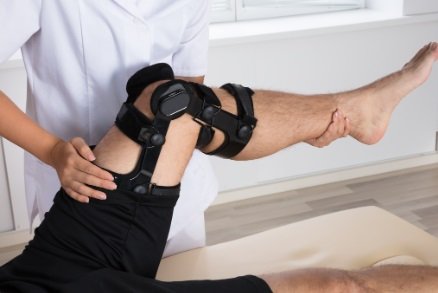
In a groundbreaking advancement in knee rehabilitation, researchers at the Indian Institute of Technology (IIT) Ropar have developed an innovative and affordable device for Continuous Passive Motion (CPM) therapy. This new mechanical device addresses the high costs and dependency on electricity associated with traditional motorized CPM machines, making it accessible for a broader range of patients, particularly those in rural or underserved areas.
Mechanical Design and Functionality
The IIT Ropar device employs a simple yet effective piston and pulley system, allowing it to function without the need for electricity, batteries, or motors. Patients pull a handle, which stores air within the device, generating a controlled and smooth motion essential for effective knee rehabilitation. This system facilitates the gentle, passive movement required in post-surgery recovery, helping to improve joint mobility and reduce stiffness without putting excessive strain on the knee.
The mechanical design is not only cost-effective but also user-friendly. Unlike motorized machines, which can be complex and intimidating, the IIT Ropar device requires minimal setup, making it ideal for home use. Additionally, this design provides a steady and gradual motion, aiding a safe and steady recovery for patients.
Addressing the Cost Barrier
Traditional CPM devices are expensive and require access to reliable electricity, often limiting their use to well-equipped hospitals or urban healthcare centers. In contrast, this mechanical CPM device offers a low-cost alternative, making it accessible to patients in areas where healthcare costs can be a significant burden. The affordability of the IIT Ropar device helps patients in remote or rural regions gain access to essential rehabilitation therapy without straining their finances, also reducing the load on healthcare facilities by enabling home-based recovery.
Eco-Friendly and Sustainable Design
An added benefit of the IIT Ropar device is its eco-friendliness. By eliminating the need for electricity or batteries, the device reduces environmental impact and aligns with global efforts to make healthcare more sustainable. The mechanical design reduces power consumption and minimizes waste, making it a responsible choice for an increasingly eco-conscious world. This device sets an example of how innovation can contribute to both improved healthcare access and environmental stewardship.
Enhanced Portability and Convenience
Weighing significantly less than traditional motorized CPM machines, the device is highly portable, making it easy for patients to use at home and even transport if necessary. This portability allows patients to maintain a consistent rehabilitation routine without frequent hospital visits, improving their overall recovery experience. By promoting self-directed therapy, the device supports patient autonomy and minimizes the risk of complications due to delayed or inconsistent therapy.
Transformative Potential in Knee Rehabilitation
The IIT Ropar device stands to revolutionize knee rehabilitation by addressing several key challenges faced by patients and healthcare providers alike. With its low cost, ease of use, and lack of dependency on external power, the device makes CPM therapy more accessible for patients in under-resourced areas, where access to advanced rehabilitation equipment is often limited. Its affordability and effectiveness could potentially influence rehabilitation practices in India and beyond, sparking similar innovations across other medical fields.
Important Facts for Exams and General Knowledge:
- IIT Ropar: Located in Punjab, IIT Ropar is renowned for its focus on advanced research, technological innovation, and its mission to foster a culture of entrepreneurship. The development of this CPM device is part of its broader efforts to create impactful solutions in healthcare.
- CPM Therapy (Continuous Passive Motion): CPM therapy is a critical component in knee rehabilitation, particularly after surgery. By gently and passively moving the knee joint, it helps prevent stiffness, improves mobility, and accelerates the healing process.
- Piston and Pulley System: The IIT Ropar device uses a piston and pulley system that converts linear motion into rotational motion, enabling smooth, controlled movement without the need for electricity. This efficient, mechanical design is both effective and sustainable.
Summing Up
The development of this mechanical CPM device by IIT Ropar is a significant step forward in knee rehabilitation technology. With a focus on accessibility, affordability, and sustainability, this innovation represents a new direction in healthcare technology, bringing essential therapies within reach for countless patients. As this device continues to gain attention, it may inspire further advancements in medical technology, contributing to better patient care and recovery outcomes worldwide.

